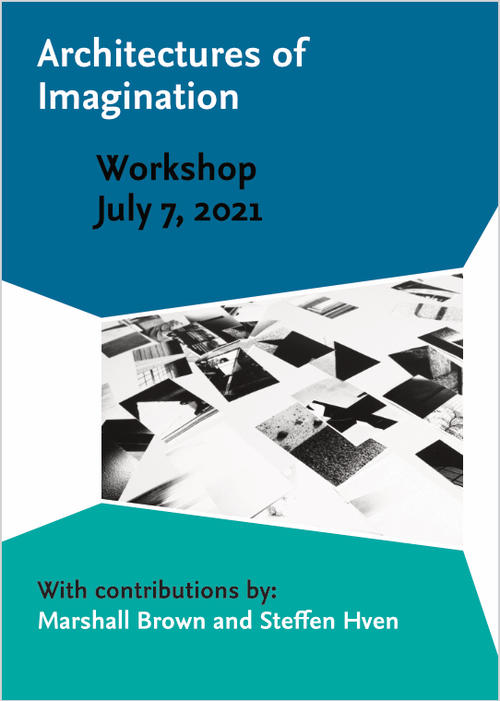Earth, World, and Cinematic Thinking / Architectures of Imagination
06./07.07.2021 | Digitaler Workshop der Kolleg-Forschungsgruppe Cinepoetics mit Jennifer Fay, Eric Ritter, Marshall Brown und Steffen Hven.
Research Focus: Fictional Worlds
Cinepoetics Artist-in-Residence, Marshall Brown, presented three ideas in development. In his talk, "Architecture of Cinematics," all of them revolved around the futurity of architecture, the device of scenario planning, and audiovisual form itself.
First, Brown turned to the role of architecture in cinema. While it is usually viewed as supporting the narrative, Brown mentioned examples like Spike Lee's DO THE RIGHT THING (1989), where architecture takes on a significant role. The location of a city block shapes both the world-experience of the inhabitants and the spectator's. Brown's individual project builds on this affordance of architecture as a storytelling device – especially in regard to its critical relationship with futurity. Then, Brown turned to the subject of scenario planning as a method to conceptualize the future as a set of plausible outcomes. This has allowed Brown to imagine a different time model with multiple and divergent futures. The various possibilities and discrepancies between them become rich sources of invention.
Lastly, Brown elaborated on his work with collage, which he uses as a conceptual tool for world-making. He was inspired by Chris Marker and specifically LA JETEE (1962), connecting his work with the film’s theme of time as being malleable. The use of still images within film combined the stillness of architecture with moving images. He concluded his talk by presenting preliminary results of his work in Berlin. Brown has taken thousands of detail shots of architectural elements that he will recompose with extracts of an essay by Daniel Libeskind. The idea is to create a short film that aims at constructing an architectural story while reflecting on cinema as a collage in time.
Steffen Hven's presentation "Atmospheric Architectures and the Medium of Perception" aimed at providing a conceptual clarification of cinematic atmospheres. Following Hven, cinema is an architectural medium involved in the arrangement of affect. He explained how the various expressive means such as soundscape, temporality, or light come together in the cinematic world as an affective ecology creating a particular atmosphere. Cinema is thus architecturally designed to manage and guide our emotions, moods, and affective responses, with atmospheres entangled in the cinematic experience. Hven underlined the symbiotic relationship between the environment and the organism's embodied meaning-making. The concept thus challenges binary thinking that has become prevalent in modern film studies and its textual approach. However, a consistent framework for the study of cinematic atmosphere is still missing. Hven then gave a short overview of contemporary research on the subject, which describes atmosphere as an affectively charged space, and as the mediator between subject and world, internal and external, cognitive and affective.
With regard to philosophers Hermann Schmitz and Gernot Böhme, Hven proceeded to point out the crucial differences between mood and atmosphere. As mood stands in close relation to the individual, it downplays the environmental aspect of cinematic experience. However, the notion of atmosphere addresses how the environment has been configured and organized for the purpose of eliciting certain affective states.
This led Hven to the mediated nature of cinematic atmospheres. He identified transparency as one necessary condition for media, in the sense that a medium must make way for the illusion of immediacy. The spectator is immersed in the diegesis, with the medium enabling the conveyance of meaning through its disintegration. In the concluding section, Hven pointed out how audiovisual images have become internalized so that they are a natural part of our reality. Our perception of the notion of the Anthropocene relies on this audiovisual imagery.
The first part of this workshop, focusing on "Earth, World, and Cinematic Thinking," can be found here.
